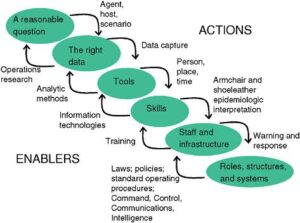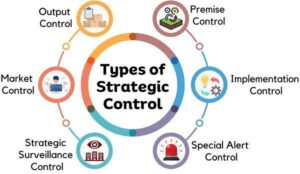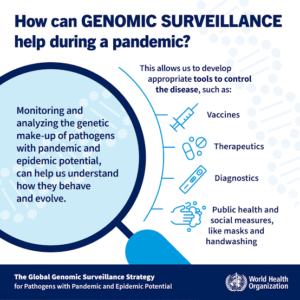Back to: MICROBIOLOGY 300 LEVEL
Welcome to class!
It’s wonderful to have you here again, ready to learn and grow. Today’s topic—Surveillance and Control Strategies—is one of the most important tools in protecting our communities from disease outbreaks. Whether you’re in a city hospital in Lagos or a community clinic in Ebonyi, understanding how to monitor and control infections is a skill that can help save many lives. Let’s break it down in a way that makes sense and stays with you.
Surveillance And Control Strategies
What is surveillance in microbiology and public health?
Surveillance means watching, recording, and analysing patterns of disease so that outbreaks can be detected early and stopped quickly. It’s like being a disease detective—tracking who gets sick, where, when, and why.

There are two major types:
Passive Surveillance:
This relies on routine reports sent by healthcare facilities. For example, when hospitals report malaria or typhoid cases to the Ministry of Health.
Active Surveillance:
In this case, health workers go out to look for cases, such as during a cholera outbreak in a rural village. This type is more thorough and helps catch issues earlier.
Surveillance helps us answer questions like:
Is there a new outbreak of Lassa fever in Benue?
Are antibiotic-resistant bacteria increasing in our hospitals?
Are vaccines working against diseases like measles?
Control strategies
Once a disease is detected, we need to control it fast. This involves several strategies, depending on the disease and setting:

Quarantine and isolation
Keeping infected or exposed people away from the healthy population. For example, isolating a patient with tuberculosis in a well-ventilated ward.
Vaccination
Vaccines help prevent outbreaks before they start. Mass immunisation campaigns have helped reduce polio and measles cases in many parts of Nigeria.
Health education
Teaching people about hand washing, safe food handling, and how infections spread is one of the most effective and affordable ways to stop diseases.
Vector control
Controlling mosquitoes through spraying, insecticide-treated nets, and removing stagnant water is crucial in preventing malaria and yellow fever.
Safe water and sanitation
Clean water and toilets reduce diarrhoeal diseases like cholera and typhoid. A well-maintained borehole and proper waste disposal in a community can make a big difference.
Antibiotic stewardship
Using antibiotics wisely and only when needed helps prevent the rise of resistant bacteria that are difficult to treat.

Real-life application
When COVID-19 emerged, Nigeria’s Centre for Disease Control (NCDC) activated surveillance teams, tracked cases, isolated patients, and issued public health guidelines. These efforts helped limit the spread, especially in the early months.
Summary
- Surveillance means monitoring disease patterns to detect outbreaks early.
- Passive surveillance relies on regular reporting; active surveillance involves seeking out cases.
- Control strategies include isolation, vaccination, health education, sanitation, and proper antibiotic use.
- These actions protect individuals and entire communities from infections.
Evaluation
- What is the difference between passive and active surveillance?
- Mention three strategies used to control infectious diseases.
- Why is surveillance important in public health?
With every concept you master, you’re becoming more equipped to protect lives and stop outbreaks before they start. Your dedication to learning can help build a healthier Nigeria, one lesson at a time. Stay inspired—Afrilearn is proud of you and we can’t wait for the next class!
